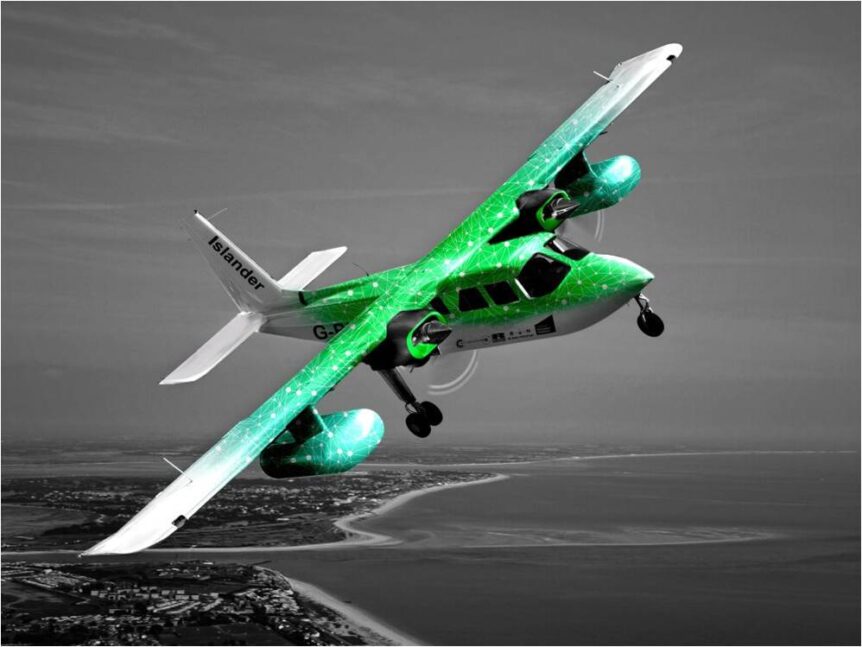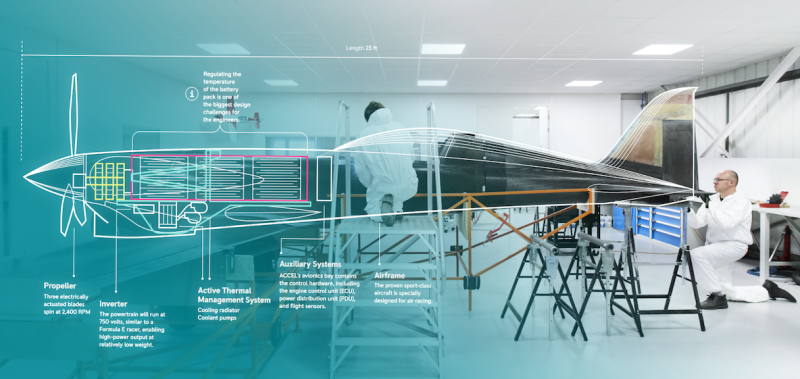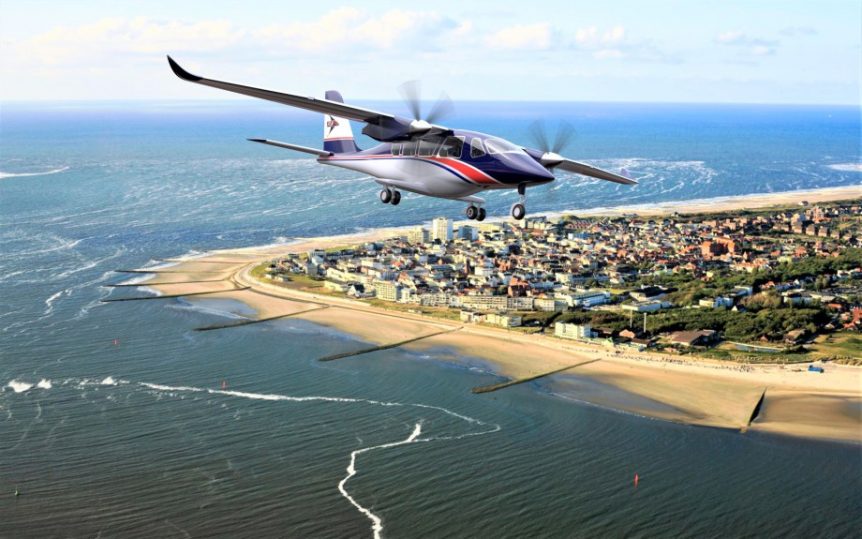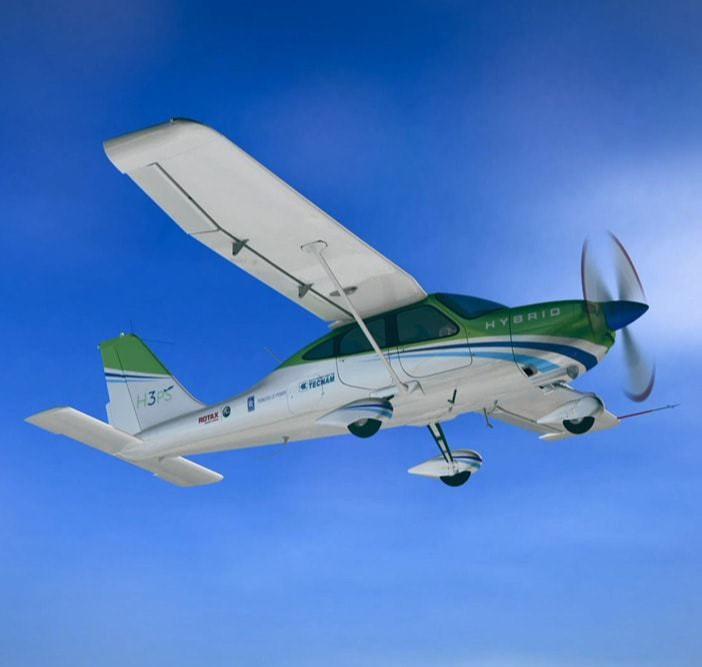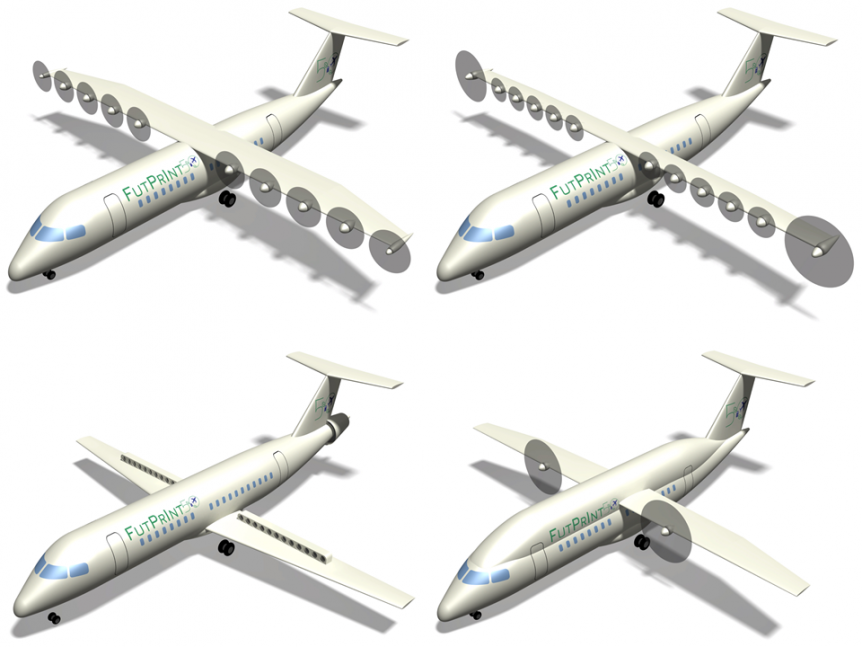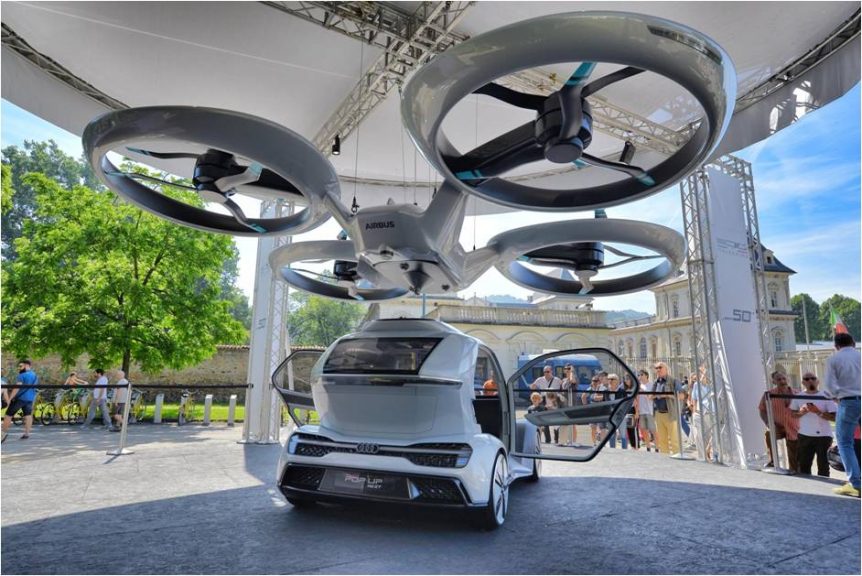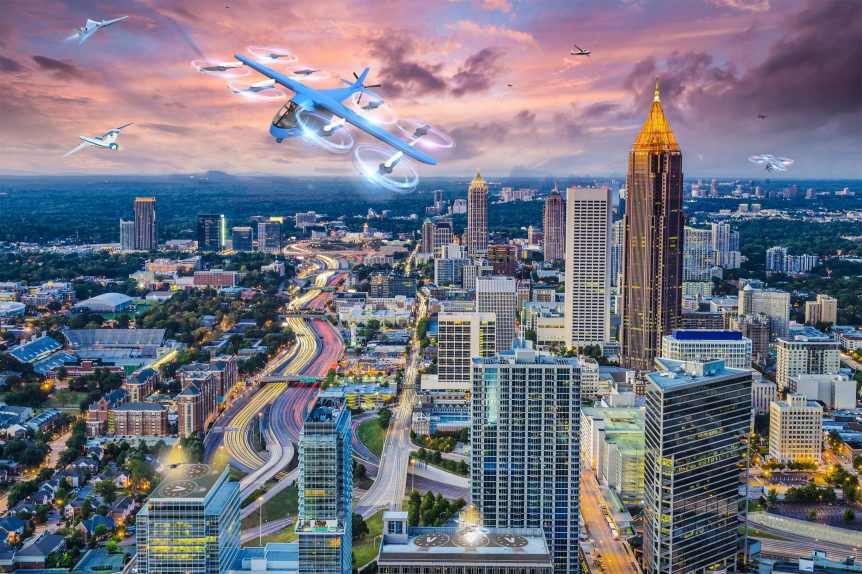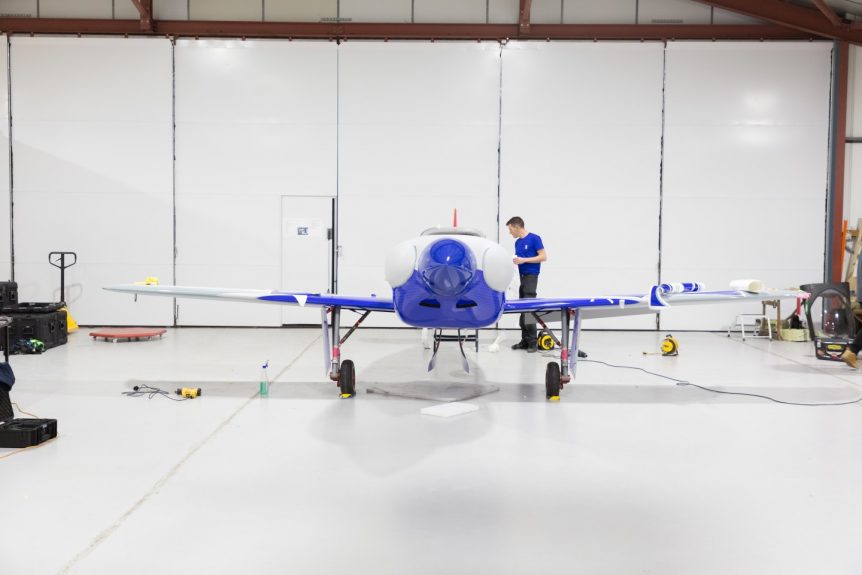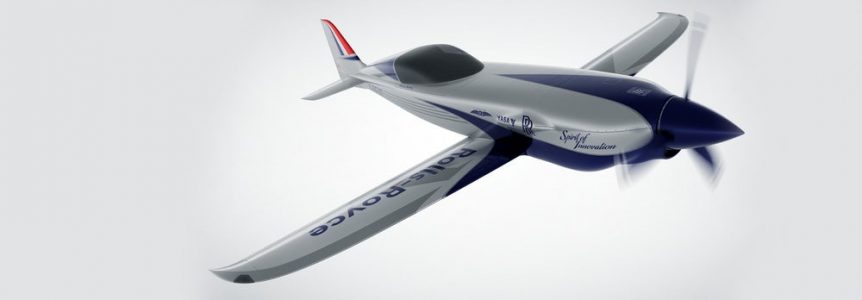Cranfield, England and its local university are hubs for electric aircraft development. Dr. Guy Gratton is test flying The Light Aircraft Company’s eKub on 48-Volt battery power, ZeroAvia is crafting a Dornier 228 to run on hydrogen, and now Cranfied Aerospace Solutions (CAeS) is readying a Britten-Norman Islander for H2-powered flight in 2023. The Islander Living up to its name, Britten-Norman’s Islander seems to be busy worldwide island hopping. The twin-engine plane ever makes the world’s shortest scheduled flights, including this between Juist to Norden across the Wadden See. The 74-second flight is less than the time spent taxiing at the beginning and end of the hop. Designed and developed in the 1960s, 750 Islanders of the 1,280 built are in service with many small airlines and over 30 militaries. Now, other enterprises are banding together with Britten-Norman and Cranfield Aerospace Solutions (CAeS) to bring hydrogen flight to the Isles of Scilly, a popular English vacation destination. Three companies signed …
First Flight of Rolls-Royce’s ACCEL Project
Rolls-Royce has made a first test flight of its ACCEL Program’s “Spirit of Innovation,” their 400 kilowatt (500+ horsepower) electric record-seeking craft. Powered by a stack of three YASA (Yokeless And Segmented Armature) motors, the Spirit flows from Jon Sharp’s NXT design, usually powered by a 540-cubic-inch internal-combustion engine. The video includes a short nod to Rolls-Royce’s involvement in aviation that leads to the current project. Rolls announced the successful first flight with an important accomplishment and a hopeful prediction. “We are pleased to announce the completion of the first flight of our all-electric ‘Spirit of Innovation’ aircraft. At 14:56 (BST) the plane took to the skies propelled by its powerful 400kW electric powertrain with the most power-dense battery pack ever assembled for an aircraft. This is another step towards the plane’s world-record attempt and another milestone on the aviation industry’s journey towards decarburization.” The flight, made on the 81st anniversary of the Battle of Britain day, acknowledged as the …
Scylax and Tecnam Field Electric Regional Commuters
Two electric regional commuters are nearing reality. A Scylax design from Calin Gologan reflects its “clean sheet” origins: the other, derived from an existing Tecnam design, honors its Italian craftsmanship heritage. Calin Gologan, Rosario De Luca and the Scylax E Series Calin, designing and building solar-powered aircraft since 2011 , and Rosario De Luca, Co Founder and CEO of EADCO GmbH and EADCO US LLC., and CEO of SCYLAX GmbH, have joined forces to create two small airliners, the Scylax E6 and E10, each enumerating its passenger capacity. Joined by the airline FLN FRISIA-Luftverkehr GmbH Norddeich, they will begin flying their pure-electric craft soon with existing batteries enabling 300-kilometer (180-mile) trips. Within the next decade, cell improvements will allow 600-kilometer with the same battery volume and weight. The pair foresees a five-percent increase in battery capacity every year, making an easy case for ongoing improvements in energy storage, aircraft range, and greater power for safer takeoffs and climbs. (Of interest …
Tecnam Goes Electric in Parallel and with Batteries
Tecnam, an Italian aircraft producer noteworthy for supplying the base aircraft for NASA’s X-57 Maxwell distributed electric test vehicle, has two of its own electric craft under development. One will be a parallel-hybrid single-engine/motor four-seater with perhaps the smallest motor Rolls-Royce can supply. The other will employ a battery-only system to power an 11-seat commuter aircraft. Tecnam’s history, starting in 1948, includes the design and manufacture of over 33 types of aircraft, with deliveries of over 5,500 airframes in more than 65 countries. Parallel Power Introduced in 2018, the H3PS (“High Power High Scalability Aircraft Hybrid Powertrain”) project was a collaboration among Tecnam, BRP-Rotax and (at the time) Siemens, which supplied the electric motor. Siemens’ electric aircraft division has since been purchased by Rolls-Royce, taking over the motor part of the H3PS partnership. The setup is similar to that employed by Axter Aerospace, a Spanish company, in 2015. The video presents the different modes of power available, but Creedence Clearwater …
DLR’s Novel Configurations
Researchers from the German Aerospace Center (Deutsches Zentrum für Luft- und Raumfahrt; DLR) conducting research into the potential of new types of design have crafted novel configurations for future flight. The DRL and BDLI (German Aerospace Industries Association or Bundesverband der Deutschen Luft- und Raumfahrtindustrie) have published a white paper: “Zero Emission Aviation – Emissionsfreies Fliegen” explicating these configurations. Surprisingly, one of their major findings is that “Electric flight enables lighter aircraft with smaller wings and distributed propulsion systems.” Battery weight has caused MagniX and Ampaire to reduce the number of passengers or the cargo loads on conversions of existing airframes. To counter those issues, “An EU research project is investigating the potential for new propulsion systems and aircraft concepts.” Obviously, these new concepts will need to take advantage of advanced materials to lower airframe weight. Hybrids and Hydrogen Thousands of airliners parked in dry desert locations highlight how the COVID crisis has affected air travel. Despite the ongoing interlude …
Rising Above It: How the Automotive Industry is Elevating Urban Air Transport
Introducing Giles Kirkland Editor’s Note: Today’s guest writer, Giles Kirkland, “… is a passionate car expert and dedicated automotive writer. He always researches on the newest car technologies and willingly tries them out, then sharing his thoughts and expertise with other automotive and technology enthusiasts across the globe. You can find Giles and his ideas at Oponeo and on Twitter.” Since he lives in England, he tends to spell things like “tyres” differently, but also writes about them with great depth and charm. Herewith, his introduction to our readers. We hope to feature his insights in future outings. Many governments, industries and groups push for a “green recovery” from the COVID-19 pandemic or simply make increasing efforts towards reducing the negative impact of people’s daily practices on the environment. We look at how the automotive industry is already backing sustainable aviation—and why. Why the Car Industry Cares about Green Aviation The car industry has expertise in mass-producing vehicles to high safety standards …
APUS Introduces Two Zero Emission Craft
We’ve written several times about structural batteries in this blog, from Dr. Emile Greenhalgh’s early research at Imperial College to more recent efforts along the same line. Interestingly, the basic idea remains very much the same over a decade. Energy storage would take place in a monocoque-type structure that could use carbon fiber, fiberglass, and even graphene as a structural material, while acting as a battery. Now some of this thinking is being applied to hydrogen storage in wings. “TubeStruct™” APUS, an aircraft design, structure and certification operation in Strausberg, Germany, offering a full range of services including flight training. They recently announced two new craft, both featuring hydrogen fuel systems contained in a novel “… patented structurally integrated hydrogen storage system, known as TubeStruct™.” In the shadow drawings of the airplanes, the tubes appear as though they could double as redundant wing spars. The i-2, a four-seat Normal-Category (CS-23) aircraft; and “The APUS i-6 is a technology demonstration platform …
UAM Realization May be Closer than We Think
We are on the verge of big happenings in the Urban Air Mobility (UAM) world. Large amounts of money are flowing into the coffers of those companies which dared to pioneer in the area. Large firms are partnering with these aerial startups. And the Federal Aeronautics Administration is paying attention while actively pursuing certification for the new machines headed our way. Jay Merkle, FAA Certification and Airspace Integration At the Transportation Review Board’s annual meeting in Orlando, Florida, Jay Merkle, head of the FAA’s UAS integration office, told attendees that six (Urban Air Mobility) UAM vehicles are “well along,” according to a report in Aviation Today. He held that the growing market is ““more than just hype … this is more than just promotional videos.” Merkle apparently feels current regulations such as FAR Part 23 are adequate to help these new electric Vertical Take Off and Landing (eVTOL) machines be certified. Merkle feels the machines in progress can provide service …
ACCELL: A (Mostly) British Coalition Going for 300 MPH
Rolls-Royce is perhaps the epitome of Britishness, going back to 1904, when Henry Royce, founder of a successful mechanical/electrical business, met Charles Rolls, a successful car dealer in London. Together, the founded the company which came to be known as Rolls-Royce. By 1906, their Silver Ghost was known as “the best car in the world.” That quality was inherent in their first aircraft engine, the Eagle, “providing some half of the total horsepower used in the air war by the allies.” It provided the power in 1919 for the first direct flight across the Atlantic and the first flight from England to Australia – both in Vickers Vimy aircraft. This led to racing success, with early V-12 engines by R-R powering Schneider Cup racers in the 1930’s, leading to the Merlin, which powered Hawker Hurricanes, Vickers Spitfires, and P-51 Mustangs. Their current ACCELL project hopes to continue that tradition. Rolls-Royce would love to have another round of victories to continue …
Rolls-Royce ACCEL Program Goes For the Gold
Rolls-Royce’s ACCEL program and a consortium of partners want to create the world’s fastest electric airplane. The concept has a recent series of predecessors, and a fascinating tie to an American speed champion. About five years ago, something called the TEACO (The Electric Aircraft Company) Bat, a formula 1-type raceplane powered by an electric motor, generated a great deal of interest. It initially housed a single 80-horsepower electric motor, but once affiliated with Williams Engineering; the project added a twin-motor unit on a set of sleeved parallel shafts swinging contra-rotating propellers. Now, a partnership led by Rolls-Royce seems to have added a third motor, with all three singing in unison to drive a three-bladed propeller. The airframe is new, too, comprising a shape that looks a great deal like the U. S racing champion, Nemesis NXT. Powered by a Lycoming IO-540 engine that airplane set a world speed record of 397.40 mph at the Moriarty Airport in Moriarty, New Mexico …
- Page 1 of 2
- 1
- 2

